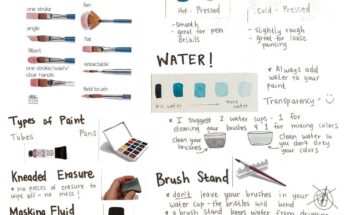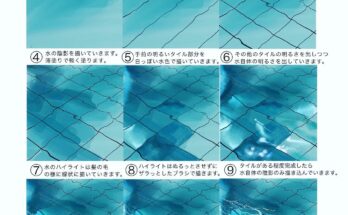Mastering the Art of Crosshatching: A Step-by-Step Guide to Drawing a 3D Sphere

Welcome to our comprehensive tutorial on mastering the art of crosshatching to transform a simple 2D circle into a realistic 3D sphere. This technique is a fundamental skill for artists looking to add depth, dimension, and shading to their drawings. Whether you’re a beginner or an experienced artist seeking to refine your skills, this step-by-step guide will walk you through the process with precision and clarity. Follow along with the provided illustrations to create a stunning spherical form using only a pencil and your artistic intuition.
Step-by-Step Instructions:
- Drawing the Base Circle
Begin by using a pencil to lightly sketch a perfect circle on your paper (Illustration 1). This circle will serve as the foundation of your sphere. Ensure the circle is smooth and evenly proportioned to set the stage for accurate shading. - Adding Initial Parallel Lines
Next, introduce sparsely spaced parallel lines across the circle to initiate the shading process (Illustration 2). These lines should follow the contour of the circle, curving gently to suggest the spherical shape. Keep the lines light and evenly distributed to establish a baseline tone. - Incorporating Perpendicular Parallel Lines
Enhance the structure by adding perpendicular parallel lines that intersect the initial set (Illustration 3). This crosshatching technique begins to build a grid-like pattern, adding a subtle layer of depth. Maintain the curved alignment to reinforce the sphere’s form. - Increasing Line Density for Medium Value
To develop a medium value and further define the sphere, draw additional crossed lines with slightly increased density (Illustration 4). Focus on varying the spacing and intensity to create a gradual transition from light to shaded areas. This step is crucial for building a realistic light gradient. - Adding Dark Value with Dense Crosshatching
Intensify the shading by drawing dense crosshatching lines to create a darker value on the side opposite your imagined light source (Illustration 5). The lines should be closely packed, following the sphere’s contours to emphasize the curvature and depth. This contrast will highlight the light source’s effect. - Finalizing with Almost-Black and Highlight Adjustments
Complete the sphere by adding an almost-black value with very dense crosshatching on the darkest area, opposite the light source (Illustration 6). Then, if necessary, add a few sparse lines to the lightest part of the sphere to refine the highlight. This final touch enhances the three-dimensional illusion.
Key Technique Insight:
A critical aspect of this method is ensuring that all crosshatching lines follow the natural contours of the sphere rather than remaining straight. This rounded approach, as depicted in the illustrations, is what gives the sphere its dimensional quality and visual interest. The interplay of light and shadow, achieved through varying line density, mimics how light interacts with a real object, making your drawing appear lifelike.
Tips for Success:
- Use a light hand initially to allow for easy adjustments.
- Experiment with the direction and curvature of lines to find what best suits your style.
- Practice controlling line density to achieve smooth gradients.
- Consider the placement of your light source to guide your shading decisions consistently.
This tutorial provides a solid foundation for mastering crosshatching and can be applied to a wide range of subjects beyond spheres, such as still life or portraiture. Dive in, practice diligently, and watch your drawings transform with newfound depth and realism. Happy sketching!



